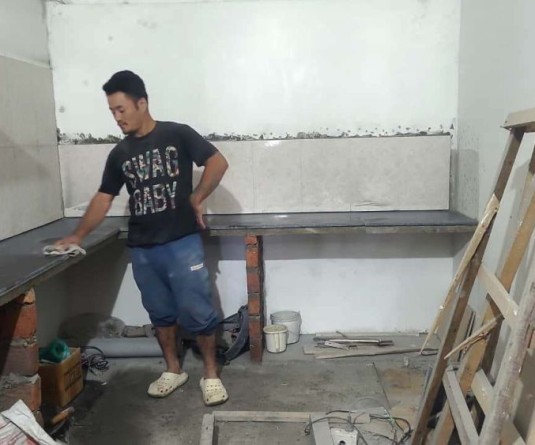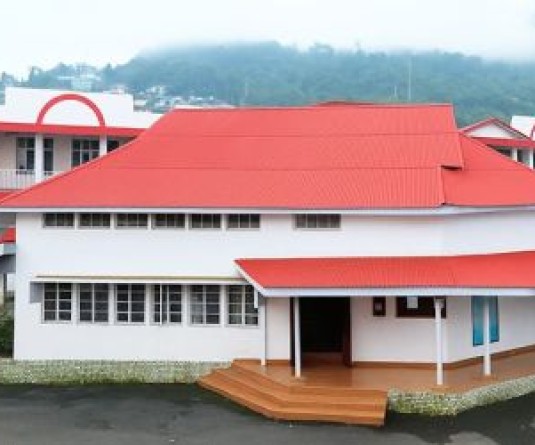
Morung Express News
Kohima | April 27
In a first in Nagaland, an indigenously developed diagnostic test kit from local species for detecting Paragonimiasis was launched on April 27 at the Healthcare Laboratory and Research Centre, Naga Hospital Authority Kohima (NHAK).
The diagnostic kit, an initiative of the Healthcare Laboratory & Research Centre, NHAK, was launched by I. Himato Zhimomi, IFS, Commissioner Secretary, Health & Family Welfare, Nagaland.
This is a pioneering work for the state where robust test tools are not available in the market, Zhimomi said lauding Dr. V Khamo and her team for the initiative.
“I am privileged to say that this is a first in our state. And truly Dr. Khamo is a pioneer in our state and this pioneering research is ultimate and most cutting edge.”
He also complimented the research team for completing indigenously developed kit with minimal use of technology, lab and assistance making it more accessible to the people.
He also encouraged the team to research on other local diseases and parasites and develop more indigenous kit.
What is Paragonimiasis?
Paragonimiasis (PRG) is a food borne parasitic infection caused by lung fluke flatworm found in crustacean such as crabs, snails and crayfish and human become infected by consuming raw or undercooked.
In Nagaland, crabs are commonly consumed as a local delicacy or for medicinal purposes.
Dr V. Khamo, Principal Investigator, Healthcare Laboratory & Research Centre, NHAK stated that PRG is mostly common in Asians, Africans, and Hispanics population and North east region of India. Over 20 million people are estimated to be infected worldwide and more than 290 million are at risk.
The first human case of the disease in India was described by Singh YI et al in 1981 from Manipur.
In 2011, TS Singh, V Khamo, and H Sugiyama wrote in the Tropical Parasitology that the first case of combined cerebral PRG with pulmonary form in the country was reported from Nagaland.
Often misdiagnosed for TB
According to the report, an 8-year-old boy of Tuensang district was admitted to the district hospital on October 15, 2007, with chief complaints of cough, fever, headache, and inability to move the right arm since one month.
The patient was initially diagnosed as a case of TB meningitis, but unresponsive to the treatment, he was transferred on November 6, 2007 to the NHAK where it was diagnosed as a case of PRG upon investigation. The patient showed dramatic improvement clinically during the follow-up period of three months with right therapy (praziquantel), the report noted.
Dr Khamo, a co-author of the report, said it is often “misdiagnosed as tuberculosis due to its similar clinical symptoms leading to wrong treatment." She further highlighted that 34.7% PRG patients are misdiagnosed for TB in Nagaland. The claim is substantiated by a study carried out by Mrinalini Das and others in Mon district between 2012 and December 2013, which found out that 3% of the 96 patients receiving TB treatment had pulmonary PRG.
They were successfully treated with praziquantel afterward, stated the finding of the report published on healthcare journal Global Health Action in September 2016.
Dr. Khamo also pointed out that 29.9% were tested positive in NHAK, while 6.8% in a community based survey at Razeba Village.
The District Tuberculosis Centre of Kohima town reported a 0.4%. The co-infection of PRG and TB stands at 2.1% in Nagaland, she added.
Highlighting the lack of awareness about the disease, Professor Mihir Goswami from Assam noted the PRG is “posing a great threat and problem in North East India.”
“It is a public health challenge. It is very common due to our food habits and consumption of raw or half-cooked food. We need to increase awareness, that is the prime need of the hour,” he said adding that awareness will lead to solution of tackling such a public health challenge.
Besides wrong treatment, mistaken diagnosis is also leading to higher figure of TB occurrence, he added.






